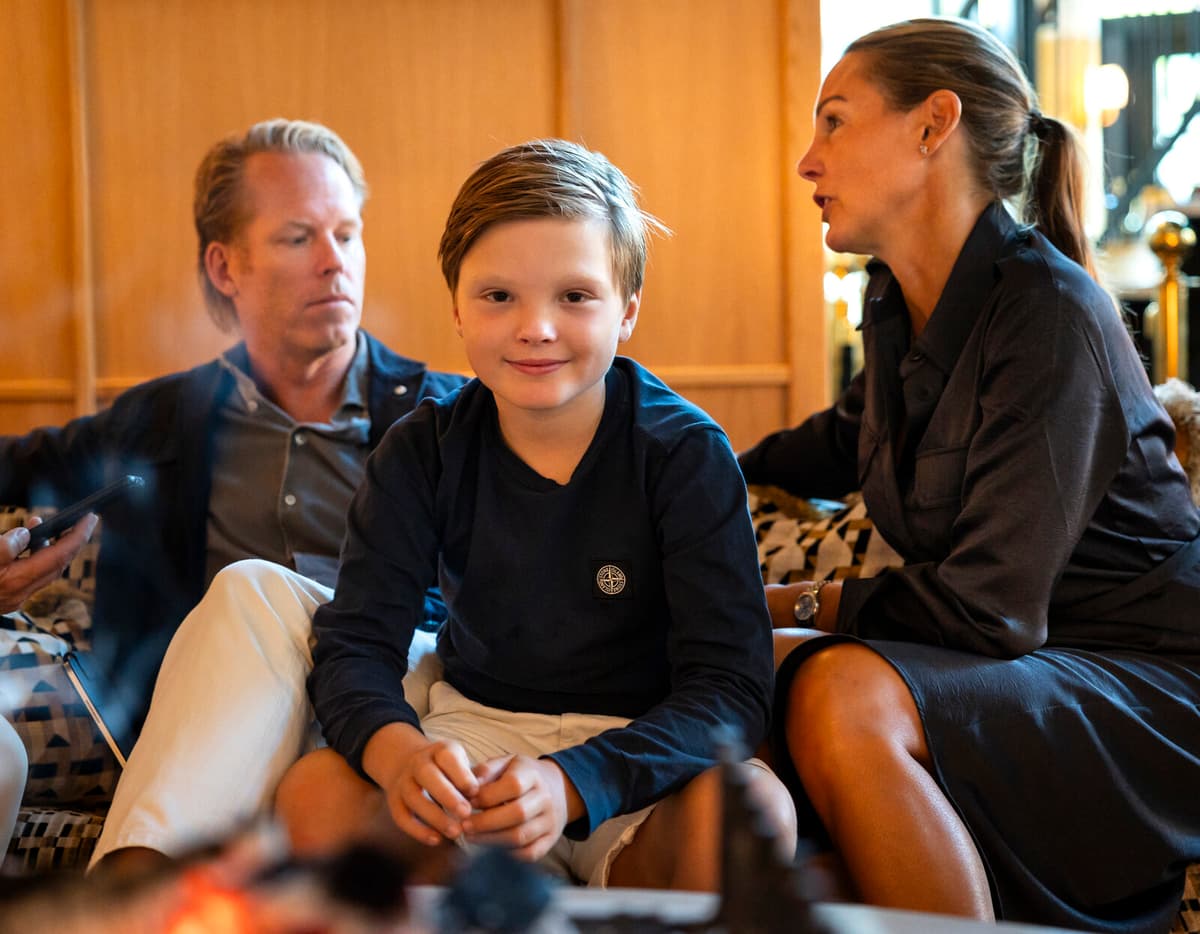Malin Stenberg was a teenager when she found out she lacked a uterus and would therefore never be able to have biological children.
But an information meeting at Sahlgrenska University Hospital in 2010 became a life-changing turning point for her and Claes Nilsson.
There were no guarantees. But we had a lot of hope, she says.
Mats Brännström and his research colleagues at Sahlgrenska Academy at the University of Gothenburg had been trying to develop a method for transplanting uteruses since the late 1990s.
Now they had come so far that it was becoming possible to move from transplantations on different animal species to humans.
Malin Stenberg had a uterus transplanted in February 2013, as the fifth woman in the research project, and was the first to become pregnant.
And in September 2013, in week 32 of pregnancy, it was decided that the baby needed to be delivered immediately due to Malin's preeclampsia.
"Normal little guy"
Vincent weighed only 1,775 grams – but was fully healthy.
I was extremely tense. Then we had been working on this for four years, but then the day came. We knew nothing. Would it work, would he be healthy, says Claes Nilsson.
When we got into this, we didn't really understand the scope and the psychological pressure we were subjected to.
Malin Stenberg nods and turns to Vincent, who is sitting next to her on the couch.
Yes, there are many moments that need to click. Lucky you became a normal little guy, when mom and dad were so stressed.
Ten years – and a day – after the unique cesarean section, Vincent has gotten a few hours off from school to give an inaugural speech at a major international conference on uterus transplants in Gothenburg.
Today, I and about 60 others who were born in the same way are just ordinary kids, says Vincent Stenberg in his speech and tells that his future dream is to become a golf pro.
It was a bit nervous, but we had practiced the speech many times, he says afterwards.
For Mats Brännström and his colleagues, Vincent's birth was an enormous success after many years of research. Since then, 16 more children have been born in Sweden – and over 60 in total worldwide.
It was a better result than I had dared to hope for. We went into the unknown and didn't know if we were doing the right thing, says Mats Brännström.
It's clear that one was a bit worried about whether it would work. But we had at least prepared ourselves as well as we could.
"Incredibly selfless"
The meticulous preparations are also a reason why the transplantations have gone so well, he believes.
Generally, if you look at IVF (in vitro fertilization), it's about 70 percent who get pregnant. Here it's over 80 percent, says Mats Brännström.
So it's a great infertility treatment. But it's naturally a costly and complex treatment. It's a major medical procedure with operations and medication.
The Swedish operations have so far been done with the help of donors who are either relatives or close friends. It was easier said than done for Malin Stenberg and Claes Nilsson.
The rescue came via Ewa, the mother of one of Claes' closest friends, who donated her uterus when she heard about the couple's struggle.
The effort she made, it's incredibly selfless. Vincent has asked a lot of questions about how it went and is very grateful to Ewa, who lent out "the bag", as we called it then, says Claes Nilsson.
Yes, it was nice of Ewa to donate her uterus, adds Vincent Stenberg.
No shortage
In fact, there is no shortage of donors, emphasizes Mats Brännström.
Transplantations have already been done from deceased donors, and in both the USA and Australia, they are working on so-called altruistic donations from women who have no connection to the recipients.
I get many emails from Swedish women who wonder if they can donate their uterus, says Mats Brännström.
So if we can learn to make the operations even safer, I think this can become more common.
Ten years after the first birth, he now hopes that the next step will be that the Swedish uterus transplants transition from research to a treatment form offered within healthcare. It is already the case in Germany and the Czech Republic.
Sahlgrenska is in the starting blocks, even if it's not formalized yet, he says.
I hope and think that Sahlgrenska shouldn't just become a Swedish but a Nordic center for this. Then we'll get a decent volume of maybe 10-20 transplantations per year.
The Swedish research on uterus transplants has been ongoing since 1999. Initially, experiments were done on mice and later on sheep and other animal species.
The first transplantation on a human was done in 2012, and in September 2014, the world's first child was born to a woman with a transplanted uterus.
The transplantations are now done with the help of robot-assisted keyhole surgery. After the transplantation, the women undergo IVF treatments.
So far, 20 operations have been performed in Gothenburg and a total of around 120 worldwide. About 60 children have been born to women who have had a uterus transplanted.
Source: Sahlgrenska Academy at the University of Gothenburg.





